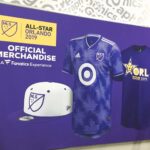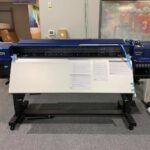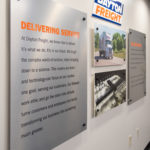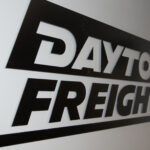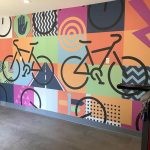
Vehicle Wrap Design Checklist
JULY 12, 2021|Vehicle wraps are a high-impact advertising medium with an exceptionally low cost per thousand impressions (CPM). It’s no wonder the global automotive wrap market is growing at a rapid pace. A well-designed custom vehicle wrap can turn your bus, delivery truck, service van, food truck, company car or other vehicle into an on-the-go advertisement. If you want to create a custom wrap that appears professional and makes a bold impression, follow this checklist of vehicle wrap design principles.
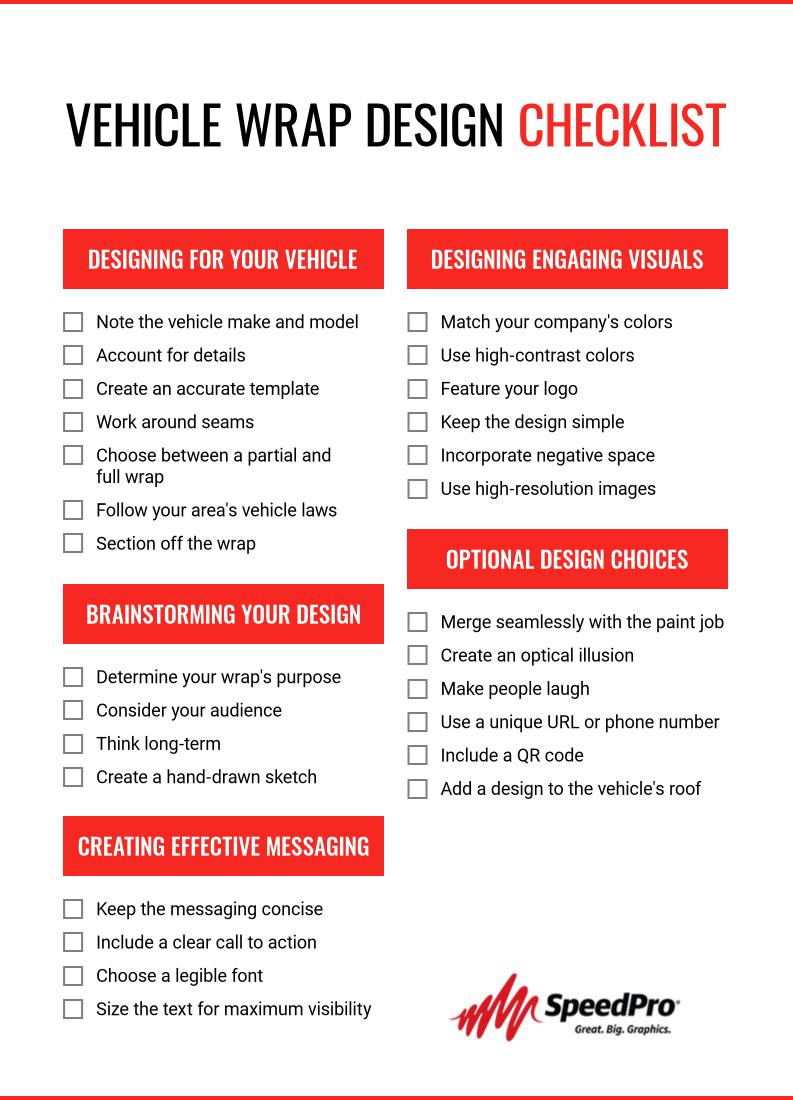
DESIGNING FOR YOUR VEHICLE
With a vehicle wrap, the space you have to work with for your design will depend on the vehicle you plan to wrap. Begin the design process by assessing your vehicle and determining how you will wrap it. Be sure to work through these steps to ensure your wrap is created especially for your vehicle:
- Note the vehicle make and model: The first step is to note the vehicle’s make and model. If you’re creating wraps for a fleet made up of different vehicle models, you’ll need to create separate wraps to fit each vehicle.
- Account for details: You should also inspect your vehicle and take exact measurements to note any deviations from manufacturer specifications. For example, a custom bumper your vehicle’s previous owner added may change the exact dimensions your wrap needs to be to fit properly.
- Create an accurate template: When you’re designing on your own, you will need to find a template designed for your vehicle’s make and model and then make adjustments if needed. If you’re working with a SpeedPro studio, our staff will photograph your vehicle and create a template that accurately reflects the size and shape of your vehicle and the placement of features like windows and door handles.
- Work around seams: Note the location of seams on your vehicle, such as the perimeter of doors, and anything you can’t cover over, like headlights. It’s best to place text and other essential elements on unbroken areas of the vehicle wrap to ensure they are not distorted by seams.
- Choose between a partial and full wrap: Full wraps cover the entirety of your vehicle, while partial wraps typically only cover central portions of the vehicle like the hood or sides. Determine how much of your vehicle you want to cover and what your budget will allow when choosing between a partial and a full wrap.
- Follow your area’s vehicle laws: Full wraps can cover your vehicle’s windows using a special perforated vinyl that allows drivers and passengers to see out. However, your state or local jurisdiction may have certain laws that prohibit any coverings on windows. Make sure you follow all relevant laws regarding your vehicle wrap’s coverage.
- Section off the wrap: If you’re creating a full wrap or a partial wrap that covers multiple sides of the vehicle, split the template into separate portions so you can design each portion of the vehicle individually. Typically, people will only see your vehicle from one vantage point, so you want the design on each side of the vehicle to make sense on its own.
BRAINSTORMING YOUR DESIGN
Early in the design process, you should think big picture about your wrap design and take down some ideas that will guide you throughout the rest of the design process. Take time to:
- Determine your wrap’s purpose: As with any marketing campaign, make sure you know the goal you’re working to achieve. Whether you want to raise brand awareness around town, make your service vehicles appear more professional to clients, or promote a specific product or service you offer, you should create your design to help you achieve your goal.
- Consider your audience: Understanding your audience is key to ensuring you appeal to that audience through your design. For example, an ice cream truck should be outfitted with bright, whimsical designs to appeal to children, while a van for a high-end caterer should feature a sophisticated design that impresses the company’s clientele.
- Think long-term: Vehicle wraps typically last three to six years, so you may want to create a wrap with a message that will be just as relevant in a few years as it is right now — unless your budget allows you to update your wrap more frequently.
- Create a hand-drawn sketch: Before you start creating a digital design, you may want to start with a piece of paper and a pen or pencil. Make some rough sketches to try out different design concepts until you settle on something you love.
CREATING EFFECTIVE MESSAGING
The text on your vehicle wrap serves a critical role. Images can give people an idea of what your company is or does, but you need to include text to communicate your company name, contact information and any other key pieces of information you want people to know. As you create the messaging for your vehicle wrap, be sure to follow these guidelines:
- Keep the messaging concise: As with a billboard, people driving past your vehicle may only have a couple of seconds to read just a few words. That’s why concise messages are the most effective ones. Resist the urge to include too much information and instead try to convey the most essential information as directly and in as few words as possible.
- Include a clear call to action: If someone sees your wrap and is interested in your business, they should know exactly what their next step should be. Encourage people to visit your website, call or stop by your store, for example.
- Choose a legible font: When readability is your chief priority, more elaborate or “scripty” fonts are not a good choice. Instead, stick to easy-to-read fonts as much as possible. If your logo includes your company’s name in one of these more stylized fonts, consider including your company’s name in a more legible font somewhere on the vehicle.
- Size the text for maximum visibility: It’s best if you can make your text easily readable from a distance so you can reach more pedestrians and drivers. You can gauge the readability of your text using the 10-by-1 rule for vehicle lettering — Every inch of letter height equates to 10 feet of readability distance.

DESIGNING ENGAGING VISUALS
While the text on your wrap is essential for communication, visuals can help bring your message to life and capture people’s attention. These visuals can consist of digital artwork, photographs or both. As you design the graphics for your wrap, follow these design best practices:
- Match your company’s colors: Consistency is key when it comes to enhancing brand awareness in your community. So make sure your vehicle wrap features the same colors you use in other marketing materials.
- Use high-contrast colors: You’ll probably want to incorporate more than one color on your wrap. As you choose your color palette, be sure to select contrasting colors so each color pops and none of your text or graphics appear muddled. If you want to use similar colors, you can choose contrasting light and dark shades.
- Feature your logo: Your logo is likely the most recognizable aspect of your branding. Prominently featuring your logo on your vehicle wrap is a great way to help people connect the ad they see to your brand identity. Consider adding your logo to both sides and the back of your vehicle so it can’t be missed.
- Keep the design simple: Creating a busy graphic is a design mistake you should avoid with vehicle wraps. Intricate patterns, too many colors or complicated imagery can distract from your message rather than enhance it.
- Incorporate negative space: One way to avoid an overly busy graphic is to leave room for negative space, also known as white space. Negative space in between lines of text or images can help each element of your design pop.
- Use high-resolution images: Vehicle graphics are especially large, so you need to use high-resolution images that will still look crisp when expanded. The ideal resolution to shoot for is 300 dots per inch (DPI), but a DPI in the range of 100-150 is still adequate, especially for viewing from a distance.
OPTIONAL DESIGN CHOICES
Vehicle graphics provide an amazing canvas for creative marketing campaigns. The sky’s the limit when you choose this medium to advertise your company. Consider giving your design a boost and making a bold impression with some of these ideas:
- Merge seamlessly with the paint job: If you create a partial vehicle wrap, consider matching the background color to your car’s paint job, or fade into that color near the edge of the wrap. This technique creates a sleek and sophisticated look, where the graphic and the car’s exterior blend seamlessly together.
- Create an optical illusion: Creating an optical illusion is a bit more involved than a typical design, but it can make a vehicle wrap especially memorable. For example, a delivery truck could be covered in a wrap that appears to show a window into the truck’s contents. Some companies make use of a vehicle’s doors to create an animated image.
- Make people laugh: Causing people on the road to giggle can also be a great way to make a lasting impression. You can make a joke with your messaging or create a humorous visual that captures attention.
- Use a unique URL or phone number: Vehicle advertising is known to have an impressive return on investment (ROI), but you may want to track exactly how many leads you generate from your vehicle wrap. A great way to track this is to use a unique phone number or URL on your vehicle wrap. This way, you know a call that comes into that number or a view on that landing page came from your vehicle ad.
- Include a QR code: You can also equip your wrap with a QR code so people passing by your parked vehicle can use their mobile phones to learn more about your organization. You can link to a special landing page on your website to track sales, connect viewers to your social media accounts or share a special promotion with them.
- Add a design to the vehicle’s roof: Many vehicle wraps focus only on the hood, sides and rear of the vehicle, but your roof can provide another advertising space. If you’re parked outside of a high-rise apartment or office building, for example, tenants on the upper floors could look out and see your rooftop ad.

